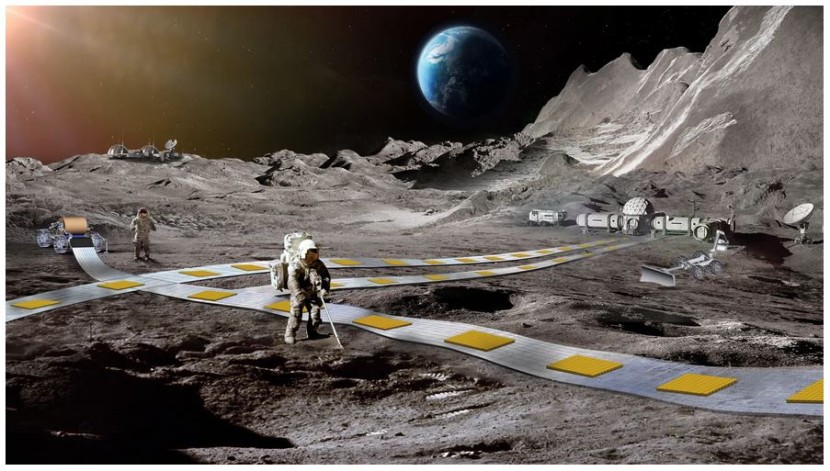
NASA engineers have a plan to build a magnetic railway system on the moon that would use floating robots to carry supplies and materials around a lunar base so astronauts can eventually reach Mars.
The plan calls for laying flexible film tracks that would use embedded electrical circuitry to levitate and propel the unpowered cargo robots.
Unlike conventional lunar robots with legs, wheels and tank-style treads, those planned for the magnetic railway would have no moving parts to prevent abrasion and wear from lunar dust.
The project — called FLOAT, for Flexible Levitation on a Track — was unveiled May 1 on the NASA website by robotics expert Ethan Schaler of NASA's Jet Propulsion Laboratory.
It would avoid the need for major construction work to build "conventional roads, railways, or cableways," and enable the transportation of payloads of varying shapes and sizes at "useful speeds" over the lunar surface, according to Schaler's proposal.
"FLOAT will operate autonomously in the dusty, inhospitable lunar environment with minimal site preparation, and its network of tracks can be rolled-up/reconfigured over time to match evolving lunar base mission requirements," he wrote.
The idea is part of NASA's "Moon to Mars Architecture," which the space agency calls its "roadmap for long-term exploration of the lunar surface, our first steps on the Red Planet, and the journey beyond."
Schaler said a "durable, long-life robotic transport system will be critical to the daily operations of a sustainable lunar base in the 2030's, as envisioned in NASA's Moon to Mars plan."
NASA plans to send two astronauts to the moon's surface for the first time since 1972 to help prepare for the eventual Mars mission.
The Artemis III trip to the moon is scheduled for no earlier than September 2026.








